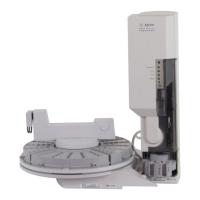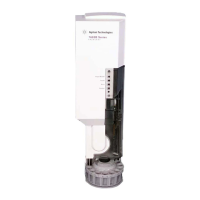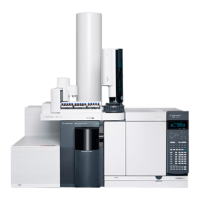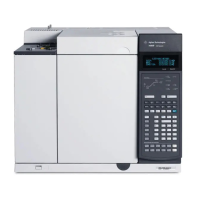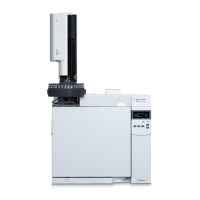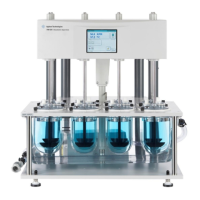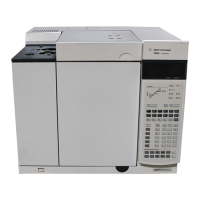Preparing for Operation
Preparing the solvent and waste bottles
42
solvent bottles in both positions and set the run parameters for solvent washes
from both positions (e.g., one from solvent A and two from solvent B).
Example 3 (tray installed): Your application requires three sample washes,
three solvent A washes, and three solvent B washes with a 10-µl syringe. For
100 sample vials (two injections per vial), you need 600 solvent washes and
need to dispense 1,200 syringe volumes of waste. With this example, you are
using two bottles for solvent and two bottles for waste.
Figure 31 shows that you can have up to 250 washes from each solvent bottle
and can dispense up to 1,000 washes into the waste bottles. You would exceed
the solvent and waste capacity of the bottles. Read the next section to estimate
the maximum number of sample vials you can run at one time.
Estimating the maximum number of sample vials
This section contains equations and tables for estimating the maximum
number of sample vials you can run before you must replace the solvent or
empty the waste bottles.
Caution The number of sample vials given in the equations and tables are estimates.
Characteristics of the solvent, such as the evaporation rate and surface
tension, may affect the capacity of the bottles.
If you use either the tables or the equations, you must know the following
parameters for your application:
• The number of injections per vial.
• The number of solvent washes per pre- and post-injection required from
each solvent bottle.
• The number of sample wastes and solvent washes per injection that the
injector dispenses into each waste bottle. When the tray is installed, you
must use two waste bottles. The injector dispenses the waste equally
between the two bottles unless you have specified differently on the
6890 Series GC.
• The syringe size, 5 µl or 10 µl.

